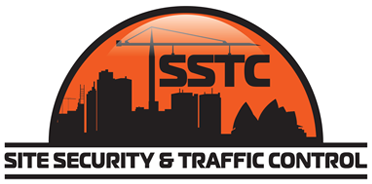Local impact assessments (LIAs) come in many forms, and they vary depending on the type and scale of a particular project. In this article, we’ll be taking a closer look at local impact assessments, what they are, why they are needed and what the benefits are of having a local impact assessment carried out.
What Are Local Impact Assessments?
Communities are always growing and evolving, leading to new development projects, such as housing estates, commercial buildings, roadworks and more, getting underway. Every construction project is going to have an impact on the surrounding area or the community in general. This isn’t to suggest that every impact is going to be negative in nature, as there are generally positive impacts, too, especially once the project has been completed.
To assess the potential effects of such projects, local impact assessments are often carried out. These assessments provide valuable information about both the positive and negative impacts of a proposed project. The information also helps stakeholders make informed decisions about a proposed project and discover ways to minimise negative impacts that may arise. LIAs often go hand in hand with a risk assessment. Information is gathered through research, consultations with stakeholders, site visits, conferring with security consultants, governing bodies and so on. It also aims to identify ways to mitigate any negative impacts or enhance positive ones.
Examples of factors that may be considered in local impact assessments include:
- Traffic changes and hazards on local streets around the site
- Traffic management
- Safety for workers and the general public
- Social impact
- Economic impact (positive/negative)
- Potential impacts on the environment
- Community wellbeing
- Effects on local businesses and employment
- Noise from tools and machinery
- Security of the site and the surrounding area
- Impact on community services (schools, hospitals etc.)
- Dust levels
- Risk assessment and risk management
- Identifying who will be impacted by the project
- Plus plenty more...
SSTC, your local security consultants, have many years of experience working with companies and project managers with both risk management and impact assessments. Get in touch with us to learn more about how we can be of assistance with your project.
Why Are They Needed?
The LIA processes can vary depending on the type and scale of the project and the requirements of the local government or other regulating bodies. In some cases, a local impact assessment may be required as part of the permit or approval process for a proposed development or project.
Projects that are in the pipeline need to be compliant with regulations regarding protecting the environment, safety and security of the site, as well as being adherent to social and economic standards.
Risk management is also an integral component of local impact assessments, as a risk assessment forms the foundation of determining those negative impacts that could result from the project. Effective risk management is about recognising potential risks and hazards ahead of time, noting them, and prioritising those risks regarding their likelihood of eventuating and the severity of the impact that risk would have should it eventuate. Risk management also means putting in place plans and solutions to minimise or eradicate recognisable risks. SSTC has a lot of experience in risk assessment and management processes.
An LIA also provides the information required for stakeholders and others involved to make more informed decisions, allowing proper planning to take place that will minimise any negative impact the construction may have.
A prime example of this is formulating a traffic management plan that will ensure a smooth and safe flow of traffic around the site. Traffic management also plays a pivotal role in the construction of new roadworks, where traffic congestion is expected, and pedestrian and vehicle hazards are increased. Without an effective traffic management plan, the roads in and around the site would be hazardous and total chaos. Local impact assessments take into account scenarios like this and much more.
Performing LIAs also allows stakeholders to determine whether they should go ahead with a project or whether it’s simply not viable. If the risks and negative impacts of the project are too great or would cost too much money to minimise, a potential project might get scrapped. On the plus side, with an impact assessment made, if everything looks promising, the project can be started with confidence.
Putting a local impact assessment into play also allows members of the community to have a voice regarding the project and allows individuals and local business owners to voice any concerns they may have. Everyone in the local area has the right to know what’s being proposed and to share their input and feedback on proposed building projects, including roadworks.
Without performing a local impact assessment, everyone would basically be in the dark regarding the positive and negative effects the project could have on the local community at large.
Overall, LIAs help to guarantee that proposed projects are in the best interests of the local community and the environment while also promoting transparency and community engagement in the decision-making process.
What Are the Benefits?
Local impact assessments are an essential part of the process for any proposed construction of any kind and are also beneficial for any business operator to perform. With this in mind, let’s look at some of the benefits that a LIA can provide.
Informed decisions
Once the local impact has been assessed, comprehensive information about any potential social, economic, environmental impacts and so forth is available to assist in decision making. Decision-makers can then make more informed decisions and have a clearer understanding of the best path moving forward.
Transparency
A local impact assessment provides and promotes transparency in the decision-making process too. Transparency is achieved through having a clear understanding of the potential impacts of a proposed project and how these impacts were assessed.
Enhanced community engagement
Members of the community are generally involved in certain aspects of local impact assessments. Their voices can be heard, and their input considered when decisions are made. This serves to boost community trust in the proposed project.
Effective risk assessment and management
With professional risk assessors and security consultants on hand when putting together an LIA, potential negative impacts and risks will be recognised early on, allowing everyone involved to come up with strategies to minimise risk and negative impacts before any major problems can arise.
Remain compliant with regulations
In order to avoid problems and also the possibility of receiving infringement notices and possibly fines, construction projects need to be aware of and adhere to local compliance laws and those put into effect by governing bodies. Performing an LIA will help to guarantee your project remains compliant.
Improved efficiency
Because a local impact assessment helps to identify potential issues during the planning phase, many problems and risks can be avoided altogether, making the entire project run more smoothly and efficiently.
Overall, LIAs provide a valuable tool for decision-makers and stakeholders to evaluate proposed projects. This ensures projects are in the best interests of the local community and the environment, as well as being safe and compliant.
Get a Local Impact Assessment From SSTC
Your local security consultants, SSTC, can perform a local impact assessment for your project, allowing you to be fully aware of all the positives, negatives and potential risks before your project gets underway. Call us today to discuss your requirements and discover how we can help you.



